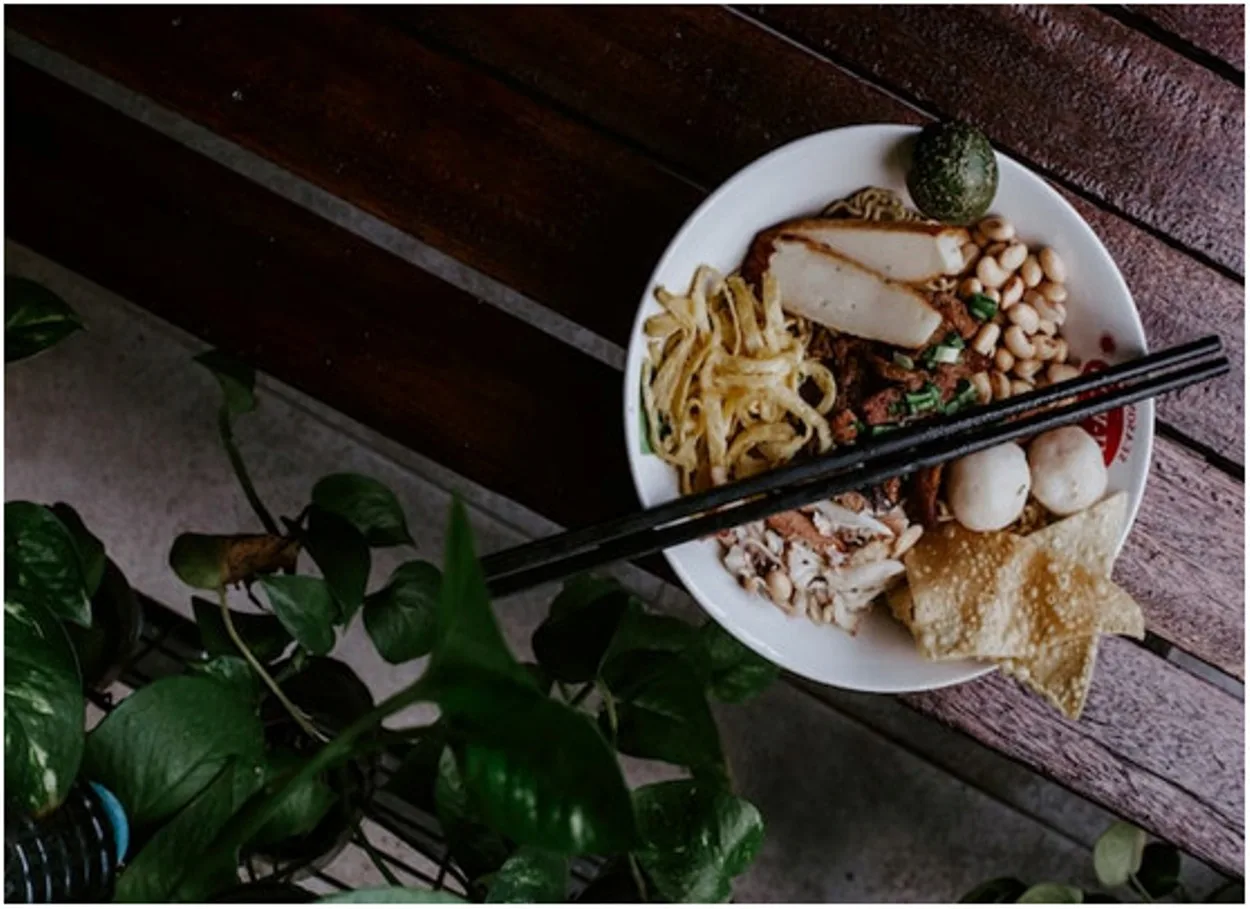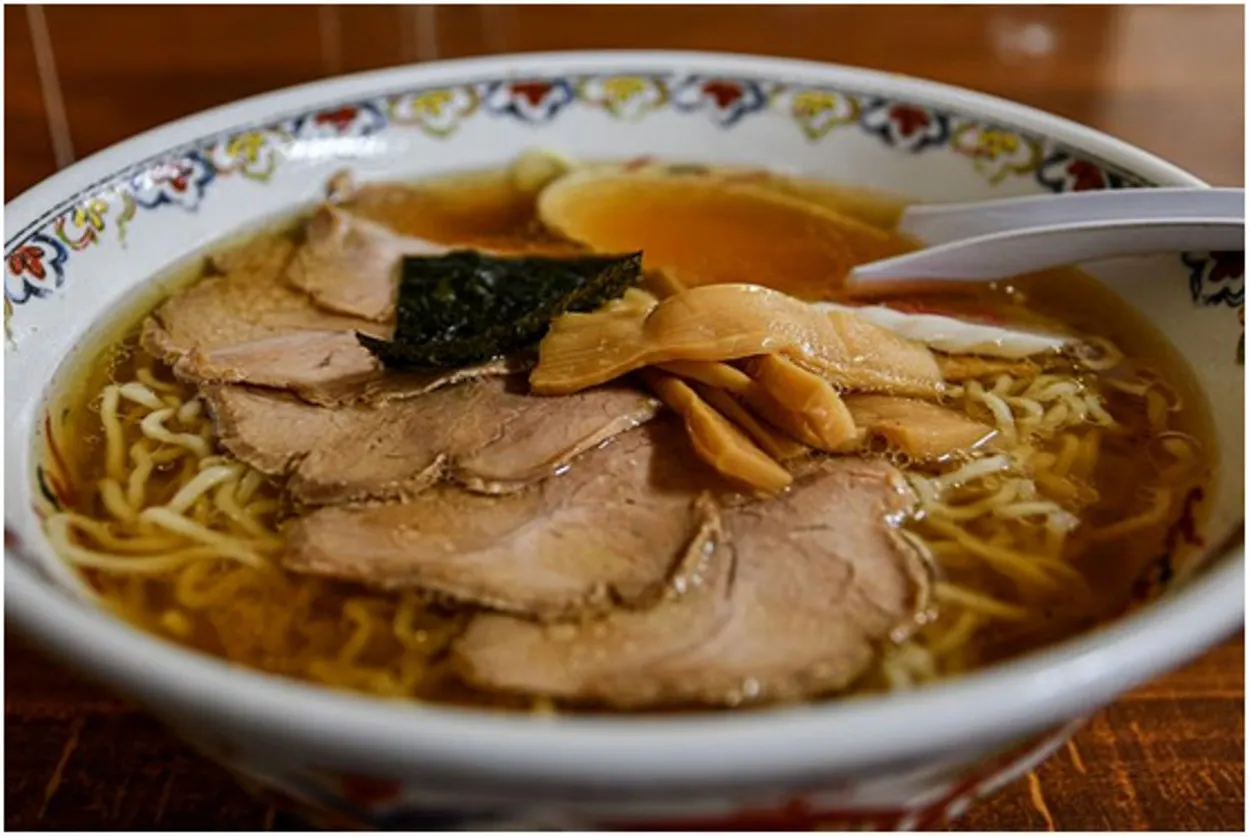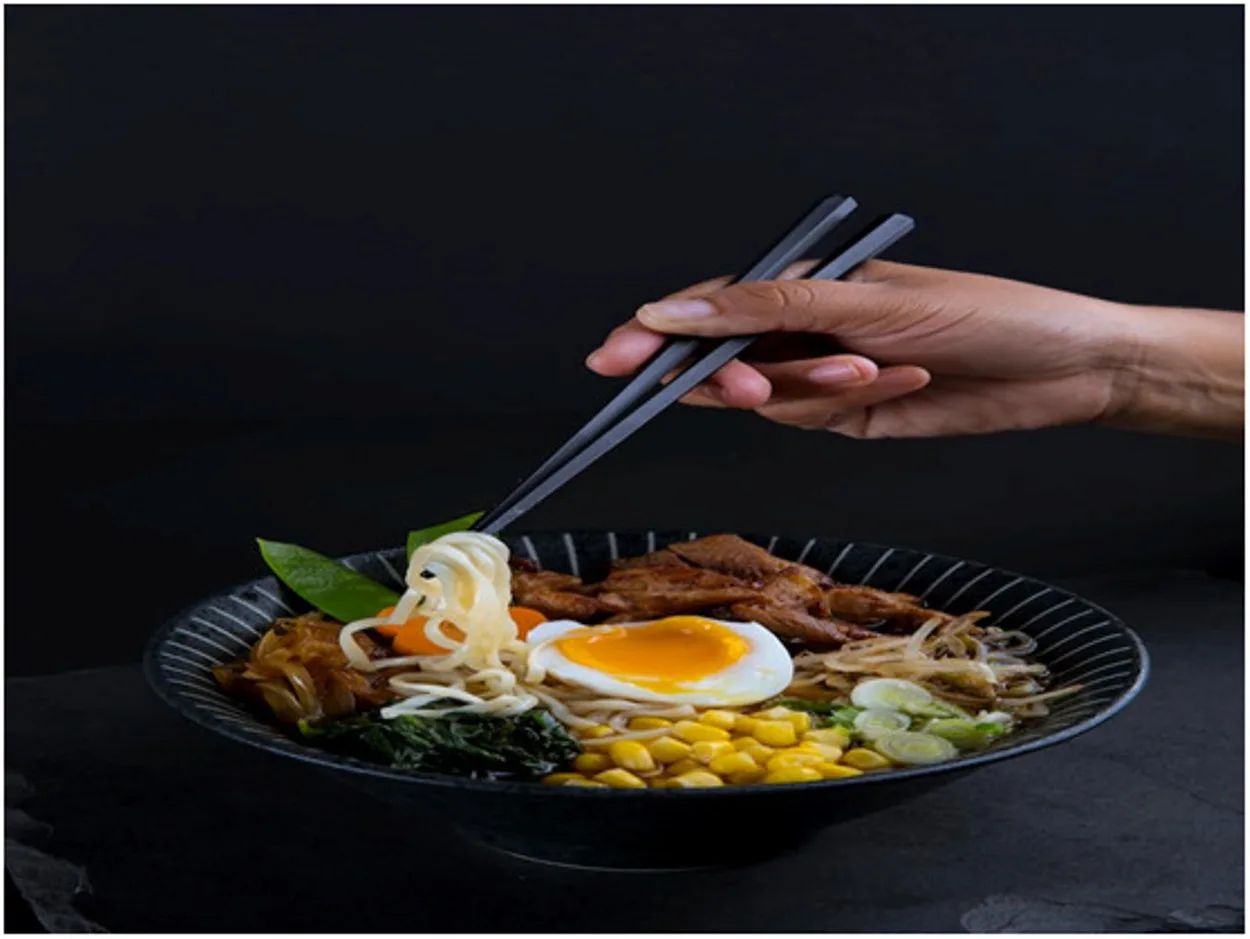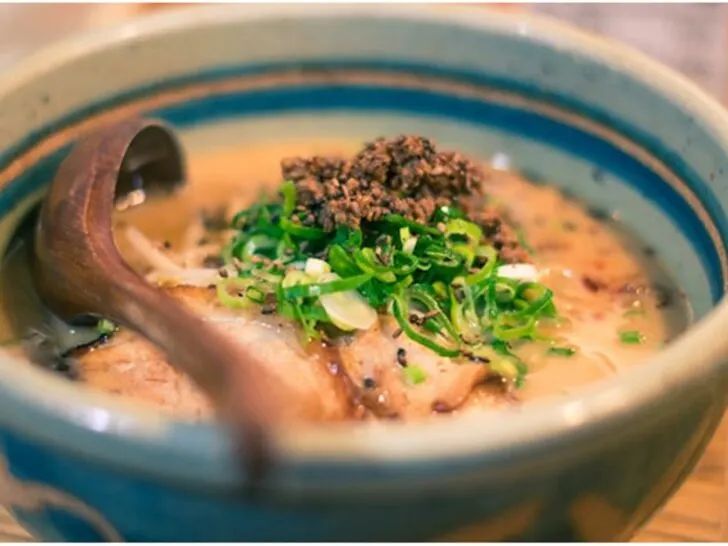Japanese noodles, introduced in Japan, are made from various flours and ingredients that are boiled and added to foods.
Japanese noodles, both thick and thin, are a staple dish of Japanese cuisine and a special treat. And they are served cold, hot, with dipping sauces, or fried with meat and vegetables.
As they have been a staple of Japanese cuisine for so long, it is difficult to pinpoint their precise origins. The majority of varieties of Japanese noodles are believed to have their roots in China but were introduced to Japan where they spread like wildfire.
There are seven different types: ramen, udon, soba, somen, shirataki, harusame, and hiyamugi noodles. Each of them has a unique appearance, feel, and flavor, not to mention the numerous sub-varieties and regional variations.
Buckwheat flour is used to make soba noodles. Wheat flour is used to make both ramen and udon. Udon is thick and chewy, whereas ramen is chopped thinner.
Discover the differences among these Japanese noodles by reading this blog post.
Ramen Noodles
Ramen is a Japanese noodle dish made from wheat flour, salt, and water; the dish originated in China but has become a famous and beloved staple of Japanese cuisine.
Ramen noodles come in different sizes, including thin, long, straight, thick, and curly. Its soft and chewy texture makes it a versatile ingredient.
Ramen noodles are a soup dish usually served with meat- or fish-based broth. Ramen noodles are considered a popular dish in Japan as well as around the world. It has four varieties, each with its unique taste and ingredients.

Here are the four types of ramen noodles:
- Shoyu ramen: Shoyu ramen is based on soy sauce and is traditionally made with chicken or pork. It is a salty broth with enough soy sauce added to make it brown. Finally, it is topped with chopped green onions, boiled eggs, carrots, chili oil, and seaweed.
- Miso ramen: This style of ramen is made with miso paste and flavored with traditional Japanese spices such as soybeans, fermented grains, and soy sauce. An oily stock made from chicken or fish meat is slightly thicker and has a yellow base. Miso ramen is a savory soup with slightly sweet flavors and different toppings.
- Shio ramen: Shio ramen is the oldest and means “salt” in Japanese. As the name suggests, it consists of a salt-based broth. Its taste is mild and refreshing. Chicken, fish, or pork are seasoned with a lot of salt and spices. Shioramen is light in appearance and served with seaweed and green onions.
- Tonkotsu ramen: TonKotsu ramen has a slightly thick and creamy texture and is cooked with pork bones for several hours, breaking down the bones to release collagen, resulting in a cloudy and flavorful broth. This broth is cooked with other spices and is mild in taste and milky in color. Its toppings include green onions, minced meat, boiled eggs, and pickled ginger.
Soba Noodles
Soba noodles are traditional Japanese dishes made from buckwheat, wheat flour, and sea salt. These Japanese noodles are eaten both hot and cold. The most common way to enjoy soba is as a hot soup.
This soup includes seaweed, green onions, and tempura. Also, a dipping sauce made of soy sauce, mirin, and dashi is popularly served on top of steamed noodles, and this dish is known as “zaro soba.”
Soba noodles can be added to various dishes, sometimes stir-fried with vegetables and meat. It is also a versatile ingredient as it is a healthy wheat-based source of protein and fiber. And because of its low glycemic index, it is considered a healthy ingredient.
Udon Noodles
Udon is part of Japanese cuisine. It is a thick and chewy noodle that is thicker than soba. It is prepared from wheat flour, salt, and water. Udon noodles are used in various kinds of hot and cold dishes.
Its most famous dish is “cake udon hot soup,” with a flavorful broth called kakijuru. Green onions, tempura, grilled chicken, and shichimi seasoning are among the ingredients that accompany it. Udon noodles are made with dashi, soy sauce, mirin, and vegetables.
It is also a type of instant noodle that is boiled before cooking. Udon noodles can be made into a simple soup or a complex dish. It becomes a delicious and popular dish when served cold with a dipping sauce in the summer.
Somen Noodles
Somen noodles are similar to udon except that they are thinner in texture and white in color. It is a refreshing and light dish due to its delicate and smooth surface. One often eats cold. Especially in summer, it is consumed with tsuyu, a dipping sauce based on soy sauce.
In some restaurants, artificial rivers are created for dishes, and some are thrown into the river and eaten by customers with chopsticks. Eating this way requires a lot of effort. The few that escape cannot be eaten, so the pressure is put on scavengers to catch and eat more.
Shirataki Noodles

Shirataki noodles are made from konjac flour and are extended in texture and white. They are grown in China, Japan, and Southeast Asia. It is made from the starchy root of the konjac plant, and the konjac is refined into a flour known as glucomannan flour.
Stir-fry dishes, soups, and noodle salads are popular uses of shirataki noodles. These are also found at many health stores. Their distinctive feature is that they are also labeled “miracle noodles” due to their low calorie and carbohydrate content.
Shirataki is excellent for consumption by those on a low-carb and gluten-free diet because it contains 97% water and 3% glucomannan fiber.
The specialty of these noodles is that they have a distinct taste and texture that may take some getting used to. Shirataki is the only noodle that does not add calories, even after eating a lot; it is an alternative to traditional pasta.
Hiyamugi Noodles
Hiyamugi noodles are thin and wheat-based. These noodles are second only to somen in popularity and are typically consumed cold.
Hiyamugi noodles are known for their chewy texture and mild flavor. They are also called fragile because they become mushy if cooked too long, but once cooked, they become like other types of pasta.
Hiyamugi noodles are often used as salad dressings or soup toppings and are also eaten with dipping sauces to complement the flavors. It’s perfect for anyone looking to add more variety to their noodles.
Harusame Noodles
Harusame noodle means “spring rain” in Japanese. It is prepared from potatoes, corn, and peanut starch.
As they are transparent, they are called glass noodles, bean thread noodles, cellophane noodles, and many other names in Japan.
Harusame noodles are 5 to 7 inches long and have a thin texture. Noodles are used in salads, stir-fries, soups, and spring rolls.
The unique thing about Harusame noodles is that gluten-intolerant people can eat them without worrying because it does not contain gluten.

Differences Among Japanese Noodles
| Types of noodles | Calories | Taste | Size | Texture | Making ingredients |
| Ramen noodles | There are 188 calories in one cup of ramen soup. | Ramen noodles originated in China so it tastes similar to Chinese noodles. | Ramen noodles are 1/4 to 1/2 inch in diameter. | Ramen noodles have a variety of textures and are chewy and yellow in color. | Ramen noodles are made from wheat flour, salt, and water. |
| Soba noodles | Soba is made from buckwheat, so it has 192 calories. | Soba is often served cold with a dipping sauce and has a nutty flavor. | Soba noodles are usually thin and flat, with a width of about 1/16 to 1/8 of an inch (1.5 to 3 mm) and a length of about 6 to 8 inches (15 to 20 cm). | Soba noodles are thin and translucent, with a brownish-grey color. | Soba noodles are made from buckwheat flour. |
| Udon noodles | Udon noodles are the heaviest so they contain 310 calories. | Japanese udon has a slight wheat flavor that combines wit the soup’s ingredients to make it delicious. | Udon noodles are 3/8 to 1/4 inch in diameter because they are heavy. | Udon noodles are thick and chewy but have a soft and smooth texture and white color. | Udon noodles are made from wheat flour only. |
| Somen noodles | There are 231 calories in one cup of somen noodles soup. | Somen noodle dishes are mild in taste, hence the name “refreshing dish.” | Somen noodles are very thin, with a diameter of about 1/16 of an inch (1.5 mm) and a length of about 8 to 12 inches (20 to 30 cm). | Somen noodles are thin, delicate, and white in color. | These noodles are made from wheat flour and water. |
| Shirataki noodles | Shirataki contains only water and fiber, due to which has 20 calories. | Shirataki noodles have a rubbery taste due to their high water content. | Shirataki noodles are usually thin and translucent, with a diameter of about 1/16 to 1/8 of an inch (1.5 to 3 mm) and a length of about 6 to 8 inches (15 to 20 cm). | They have a different texture and are easily chewed but have no color. | Shirataki noodles are made from konjac flour. |
| Hiyamugi noodles | There are 200 calories in a single serving cup of Hiyamugi noodles soup. | Hiyamugi noodles are often used in salad dressings because of their light and refreshing taste. | Hiyamugi noodles are thin and round, with a diameter of about 1/16 to 1/8 of an inch (1.5 to 3 mm) and a length of about 6 to 8 inches (15 to 20 cm). | Hiyamugi noodles are thin, white, and have a similar texture to udon. | Hiyamugi noodles are also made from wheat flour. |
| Harusame noodles | There are 190 calories in Harusame noodles. | It has a neutral taste. | Harusame noodles are very thin and translucent, with a diameter of about 1/16 of an inch (1.5 mm) and a length of about 6 to 8 inches (15 to 20 cm). | Harusame are transparent, delicate in texture, and have no color. | These noodles are made from potato and corn flour. |
Japanese noodles are eaten in Japan but have different sizes, textures, flavors, and ingredients. It should be noted that calorie counts vary from brand to brand, with serving ingredients, additional toppings, and sauces adding to the calorie count.
Still, somen, soba, and shirataki have fewer calories than other noodles. And all these noodles have their own distinct and unique taste. That depends on the person eating them. Also, how soft the texture depends on how it is prepared.
Japanese cuisine offers a wide range of dishes made with these noodles, including hot and cold soups, stir-fries, salads, and more. Whether you prefer thin, chewy noodles like soba or thick, bouncy noodles like udon, there’s a Japanese noodle for every taste and preference.
Frequently Asked Questions About Noodles
What kind of Japanese noodles is healthiest?
Soba noodles, made from buckwheat flour, are often considered the healthiest type of Japanese noodle due to their high fiber and protein content.
What is the difference between Chinese noodles and Japanese noodles?
Chinese noodles are typically made with wheat or rice flour, while Japanese noodles are often made with buckwheat or a combination of wheat and other grains, and they have their unique characteristics and flavors.
Are noodles junk food or healthy food?
Whether noodles are considered junk food or healthy food depends on the type of noodles and how they are prepared. Some classes are more beneficial, and specific preparations may add unhealthy ingredients.
Conclusion
- In Japanese noodles, the clearer the broth, the milder the flavor, and the cloudier the broth, the tastier the flavor.
- Soba noodles are made from buckwheat flour. Ramen and udon are both made using wheat flour.
- Udon is thick and chewy, whereas ramen is finely sliced.
- No matter which type of Japanese noodle you choose, there’s no denying that they are delicious and versatile parts of Japanese cuisine.
- From classic dishes like ramen and udon soups to innovative new recipes, Japanese noodles are a staple in kitchens and restaurants worldwide, loved for their delicious flavors and unique textures.

